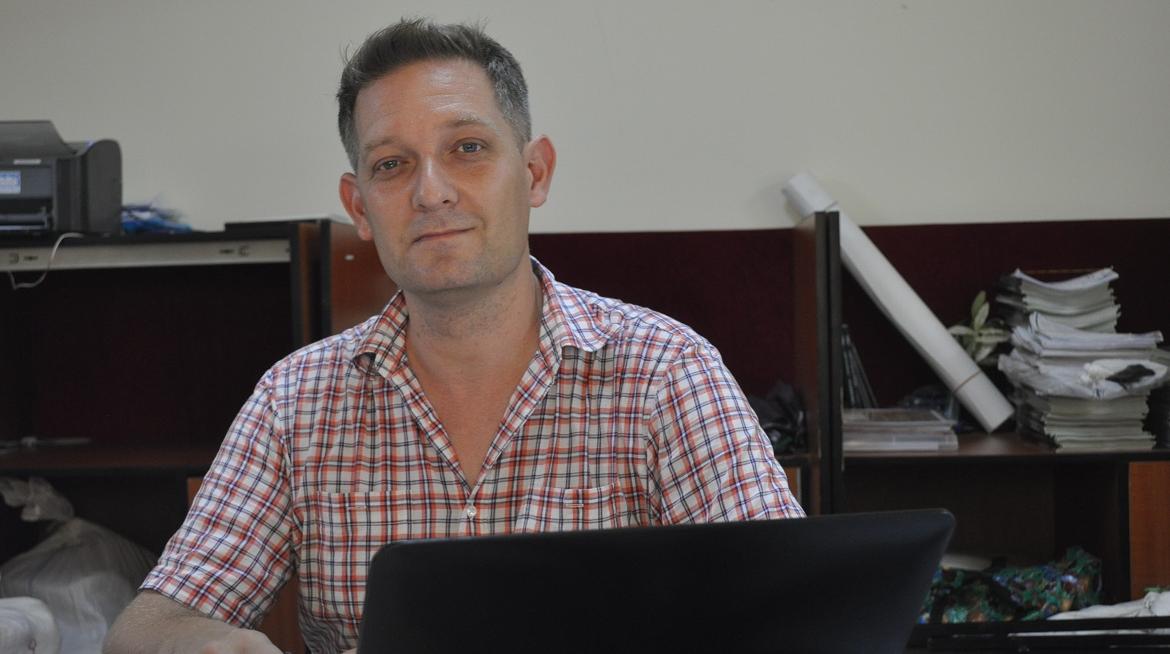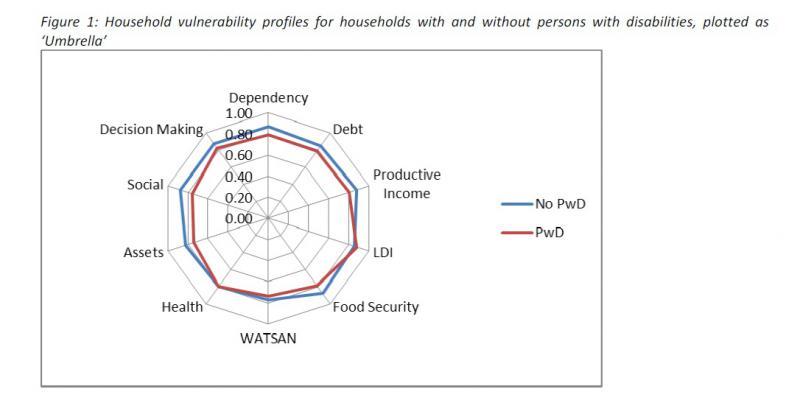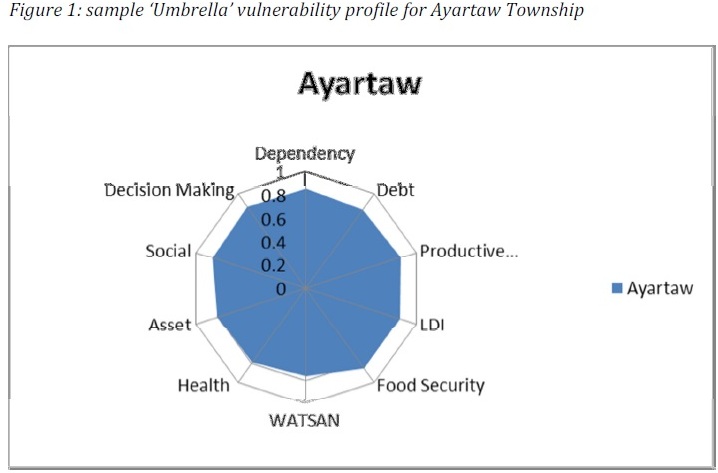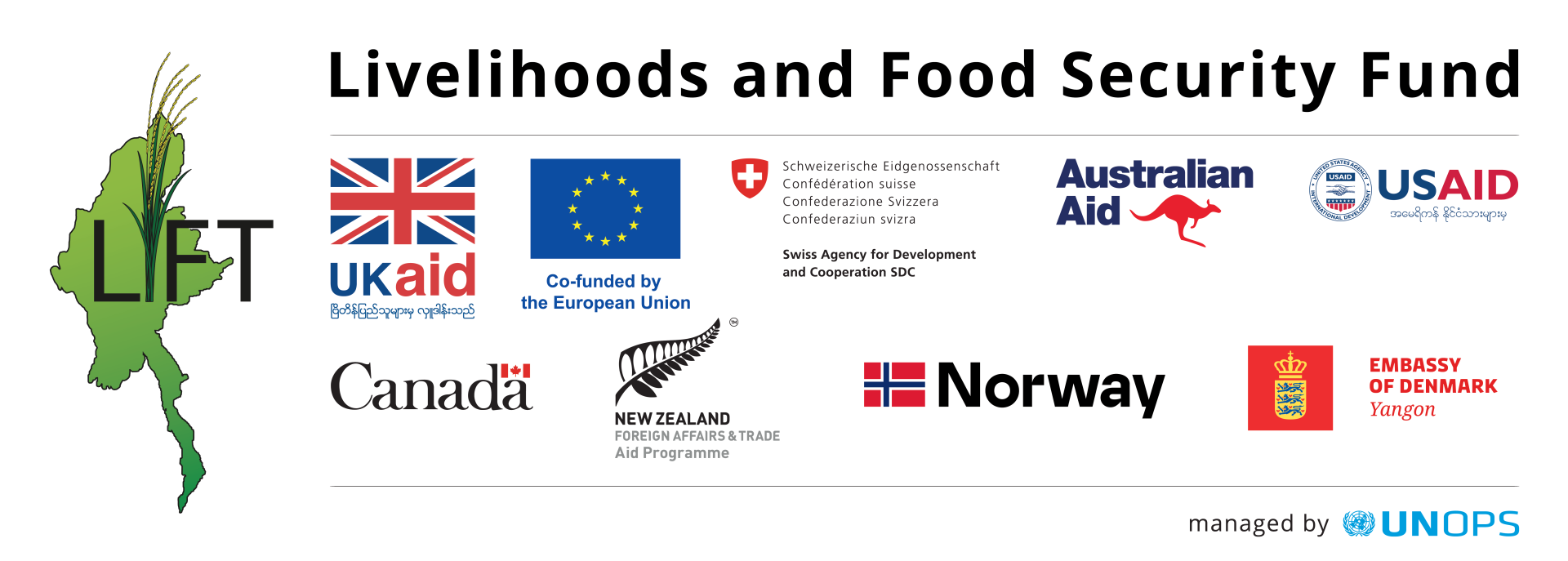
Dr Michael Griffiths, the Director of Research of LIFT partner, the Social Policy and Poverty Research Group explains why the Umbrella Model that he and his team have developed for mapping vulnerability of households in Myanmar is relevant, efficient and user-friendly.
-----------
Despite notable poverty reduction, Myanmar is one of the poorest countries in Asia with one in four people still living below the national poverty line, and ranking 150 out of 187 countries in the latest Human Development Index.
Moreover, poverty in Myanmar is complex. It is both dynamic and multidimensional- a range of economic, social, political, historical, and geographical factors contribute to it.
An immediate outcome of this is that people keep moving in and out of poverty. For poverty reduction interventions to be effective, it is vital to identify who is poor and who is at the risk of soon becoming poor.
SPPRG's Umbrella Model was made for and first tested on LIFT’s REVEAL project. It can be useful to development agencies to determine what kind of interventions to make in which area, and in particular- who should be targeted and how.
In this interview, Dr Griffiths he explains the model and its application, and suggests further reading:
What is the Umbrella Model?
MG: The Umbrella Model was developed in 2010 by LIFT as a tool to measure household vulnerability. Here’s how it works-
- Take 10 factors likely to affect household resilience, e.g. economic dependency, livelihood diversity, debt, water and sanitation, social capital, livelihood related health, decision making, asset profiles, income expenditure related factors
- Then select different indicators to measure each of these ten factors. These can be standard or context specific.
- On the basis of i) and ii), prepare survey questionnaires to interview households
- Estimate the average score of an entire sample (village, township, state, region) on different indicators.
- Compare households with that average figure. If they score low for three or more of the ten different factors then they are classified as vulnerable.
Using this method has two advantages: i) it identifies the poor and the vulnerable; ii) it determines factors contributing to their vulnerability.
The most systematic application of the Umbrella Model has been for LIFT’s REVEAL project in the Sagaing and Mandalay regions. As a baseline tool, it helped shape interventions which addressed the specific factors that made households vulnerable. This enabled a more targeted approach to programme design and beneficiary selection. When later used to measure the end line result, it showed that the poverty level of the sample had dropped by half.
This was one of the first times the poverty reduction impact of a development project in Myanmar was demonstrated quantitatively.
How is the model relevant to rural Myanmar?
MG: Poverty studies in Myanmar show households clustered around the poverty line, meaning that many households are at the risk of soon being classified as poor. A way to reduce poverty is to stop this from happening. So while most models identify the poorest households, the Umbrella Model also identifies households that are moving towards poverty.
Through its multiple indicators, the model takes a nuanced view of poverty, which is vital in Myanmar. It would be wrong to assess poverty in Myanmar simply on the basis of consumption or income, or even to look at it as an absolute state. Poverty in Myanmar is both multi-dimensional and relative i.e. households keep moving in and out of poverty.
Additionally, the term ‘umbrella’ enables dialogue. It actually comes from the physical representation of the ten factors in a radar plot when we put the data into the computer programme. However, an umbrella in Myanmar represents protection to the community from the harsh sunshine and rain, thereby acting as a metaphor for resilience to the extremes of economic conditions. This makes dialogue on issues of poverty easier.


Are there any weaknesses in the model?
One weakness that we’re trying to rectify is that there is no gold standard to compare results to. To pinpoint vulnerability, till now, we’ve been comparing households in particular communities to each other. However, we’re now conducting, along with the Department of Rural Development (DRD), a nationwide study of 24,000 households using this model. This will give us a comprehensive data set from all the states and regions in Myanmar allowing wider comparisons.
How practical is it?
MG: Practical things about the model – it is:
- Flexible: Although so far we’ve used a standard set of indicators to measure the ten factors, you can use any indicator to measure them
- Adaptable to the context: Internationally recognised indicators can be heavily adapted to the context of rural Myanmar.
- Not time consuming: If simple indicators are used to collect the data, it typically takes 30-40 minutes to survey one per household.
- Easy to use: Surveys can be conducted by people with moderate education. So far they’ve been collected by young people with 7th- 8th standard education or by government employees who received a two-day training from us.
- Support for analysis: With DRD’s help, we’ve put together a package which will allows semi-automatic calculations of vulnerability profiling once the data has been input. This is still being tested but it could potentially allow an IP to gather and enter the data, and get a basic set of results without getting too much external assistance.
Related Documents:
- The Umbrella Model explained- ‘Household Vulnerability Mapping-Tools to increase the effectiveness of CBR in poverty reduction’
- Using the Umbrella Model to measure Household Vulnerability: application in Myanmar to assess disability related vulnerability
- Sample survey quentionnaire in Myanmar language
- Sample survey questionnaire in English
- Definitions and Dimensions of Poverty and Social Protection in rural and fishing communities: qualitative survey of three regions in Myanmar
- Vulnerability Profling


